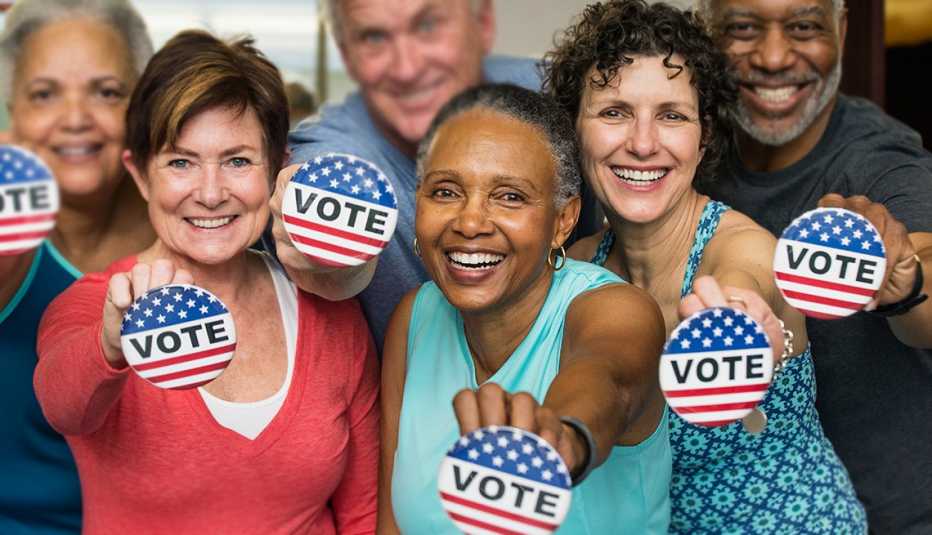AARP Hearing Center


In an election year in which a new issue seems to capture the attention of the American electorate every day, one fact remains constant: If candidates want to win, they’d better pay attention to older voters.
For nearly 40 years, the turnout of voters over age 45 has significantly outpaced that of younger Americans. In the 2016 presidential election, for example, 71 percent of Americans over 65 voted, compared with 46 percent among 18- to 29-year-olds, according to U.S. Census Bureau data. While analysts point to increased energy among younger voters over the past couple of elections, people over 65 continue to show up at the polls far more than any other age group. At the same time, the number of voters who fall into the category of “older” keeps rising.
“Both parties have to do well with the senior vote if they are going to do well in the general election,” says Stephen Ansolabehere, a Harvard University professor of government who has studied voter turnout for decades.
Ansolabehere says courting the older vote will be even more important in this year’s primaries. “Older people tend to vote more often in primaries,” Ansolabehere says. “And since the primary turnout tends to be lower, that means that bloc can be even more important.”
In this year’s midterm election, all 435 seats in the U.S. House of Representatives will be up for grabs, including 60 seats in which the incumbent is not seeking reelection. Of these seats, 41 are now held by Republicans and 19 by Democrats. And 35 Senate seats will also be in play. In the states, 36 governorships are up for election, and thousands of state legislature candidates will be on ballots coast to coast.
Many of the most competitive House races will be in states with high senior populations, such as Florida, Arizona and Pennsylvania.
“They are the stability of the American electorate,” says Ed Goeas, a veteran Republican pollster who produces the George Washington University (GWU) Battleground poll with Democratic consultant Celinda Lake. “They are the only group that I believe looks out not only for their own well-being but the well-being of their children and grandchildren.”
Beyond senior issues
Goeas says older people are more likely to view voting as a responsibility and to care about a broad range of issues, not just those commonly associated with aging. They are more connected to their communities, which also makes them more likely to vote.
Lake agrees and adds that the agenda for senior voters has been expanding. For example, older voters have started to pay more attention to student debt as they try to help grandchildren who have record amounts of student loans. Lake believes concerns over whether Medicare will be restructured or Social Security will be cut will still be on older voters’ minds this election.

































































More From AARP
Find Out Where the Candidates Stand
A guide to getting the answers from politiciansAARP Launches Voter Engagement Campaign
Goal is to turn out 50-plus voters for midterm elections